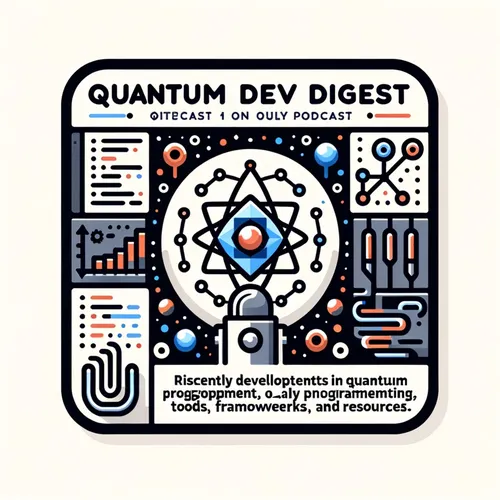Diamond Quantum Networks: Orchestrating the Future at Scale
- Author
- Quiet. Please
- Published
- Sun 07 Sep 2025
- Episode Link
- https://www.spreaker.com/episode/diamond-quantum-networks-orchestrating-the-future-at-scale--67663774
This is your Quantum Dev Digest podcast.
The whir of the dilution refrigerator, like a distant storm, always brings a tingle of anticipation. My name is Leo—the Learning Enhanced Operator—and if there's one thing I thrive on, it’s that razor’s edge where quantum theory rips open the curtain of classical possibility. And today, that edge just got sharper.
This week, IonQ and Element Six shattered a key production bottleneck by unveiling high-quality synthetic diamond films—chip-ready, robust, and tailor-made for industry-scale quantum memory and photonic interconnects. These are not esoteric lab curiosities; these diamond films are the connective tissue for scalable quantum networks, forged with the same foundry tools that fabricate the world’s silicon chips. We’re talking about a leap from custom, one-at-a-time quantum devices to quantum hardware that can, for the first time, ride the torrent of semiconductor mass production.
What makes this breakthrough so pivotal? Imagine you're assembling a large orchestra. Until now, we had virtuoso soloists—individual quantum computers—each brilliant but isolated, rarely in tune with its neighbors. IonQ’s diamond platform acts like the conductor and sheet music rolled into one, enabling hundreds, maybe thousands, of quantum nodes to harmonize at scale. Suddenly, we’re orchestrating quantum symphonies.
Synthetic diamond is more than cosmetic sparkle. These films enable ultra-stable **quantum memories**—devices capable of storing delicate quantum information for much longer than before. They also underpin **photonic interconnects**, which are, in effect, the high-speed fiber lines of the quantum world, transmitting entangled photons between processors in distributed quantum computers or dense supercomputing clusters. The analogy? Picture replacing old, tangled home phone wires with an invisible web of fiber optics across an entire city—instantly, conversations become clearer, faster, and global.
Now, why should this matter if your daily tech routine looks like checking emails and streaming cat videos? Because beneath your screen, the future backbone of the Internet—and how we solve the hardest problems in medicine, logistics, energy, and security—is being rewritten molecule by molecule. Every advance in quantum connectivity draws us closer to realizing systems that can optimize global supply chains in a blink, design new drugs atom by atom, or render today’s encryption obsolete.
And here’s the drama: This achievement isn’t in isolation. It lands amid a global funding surge for quantum startups, a race between photonics, trapped ions, and superconducting qubits, and in the same week that Osaka researchers measured quantum entanglement in “heavy” electrons—a new building block for quantum processors. The old silos between lab and industry are wobbling, ready to topple as quantum and classical workflows blend, a shift as profound as the arrival of GPUs alongside CPUs.
Each day, I see quantum’s strange poetry mirrored in our headlines—nations collaborating and competing, tech evolving in fits and starts, just as qubits tangle and resolve in Hilbert space. If today’s discovery teaches us anything, it’s that the future of technology will be as much about synchronization and connection as it is about raw speed.
Thank you for sharing this quantum moment with me. If you have questions or want to suggest a topic for the show, email [email protected]. Subscribe to Quantum Dev Digest and stay on the edge of the possible. This has been a Quiet Please Production—visit quiet please dot AI for more.
For more http://www.quietplease.ai
Get the best deals https://amzn.to/3ODvOta
